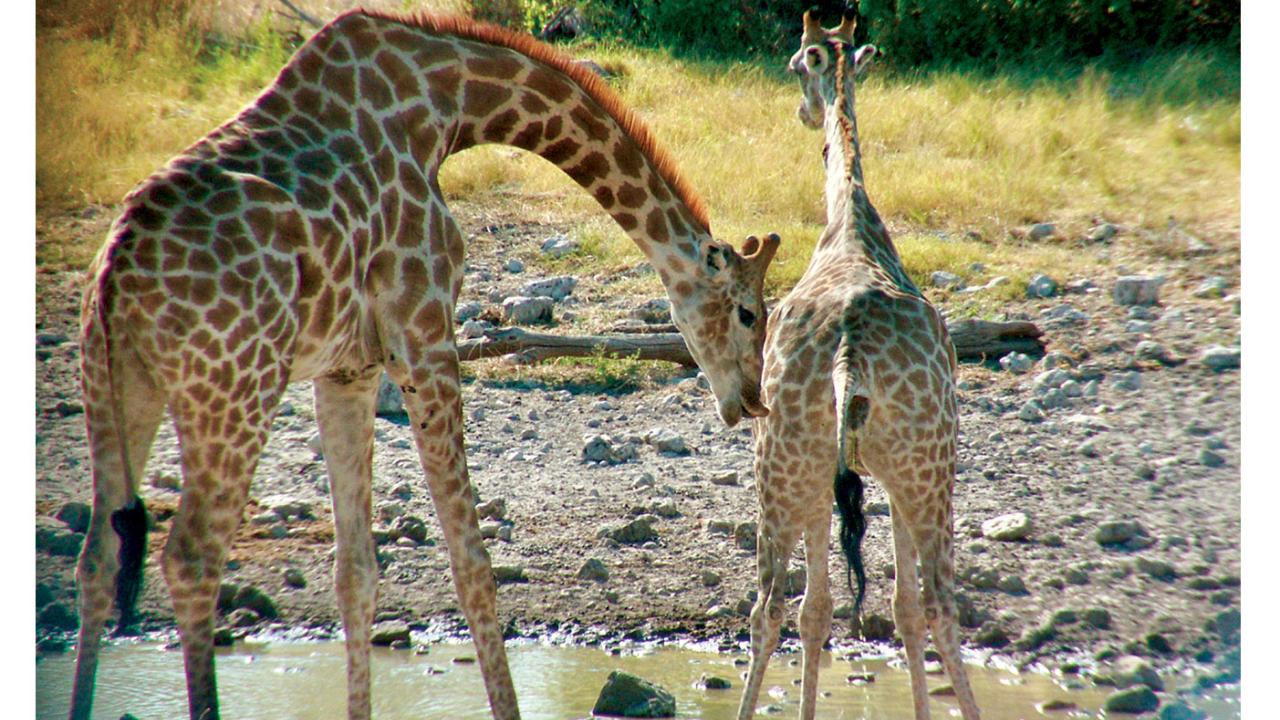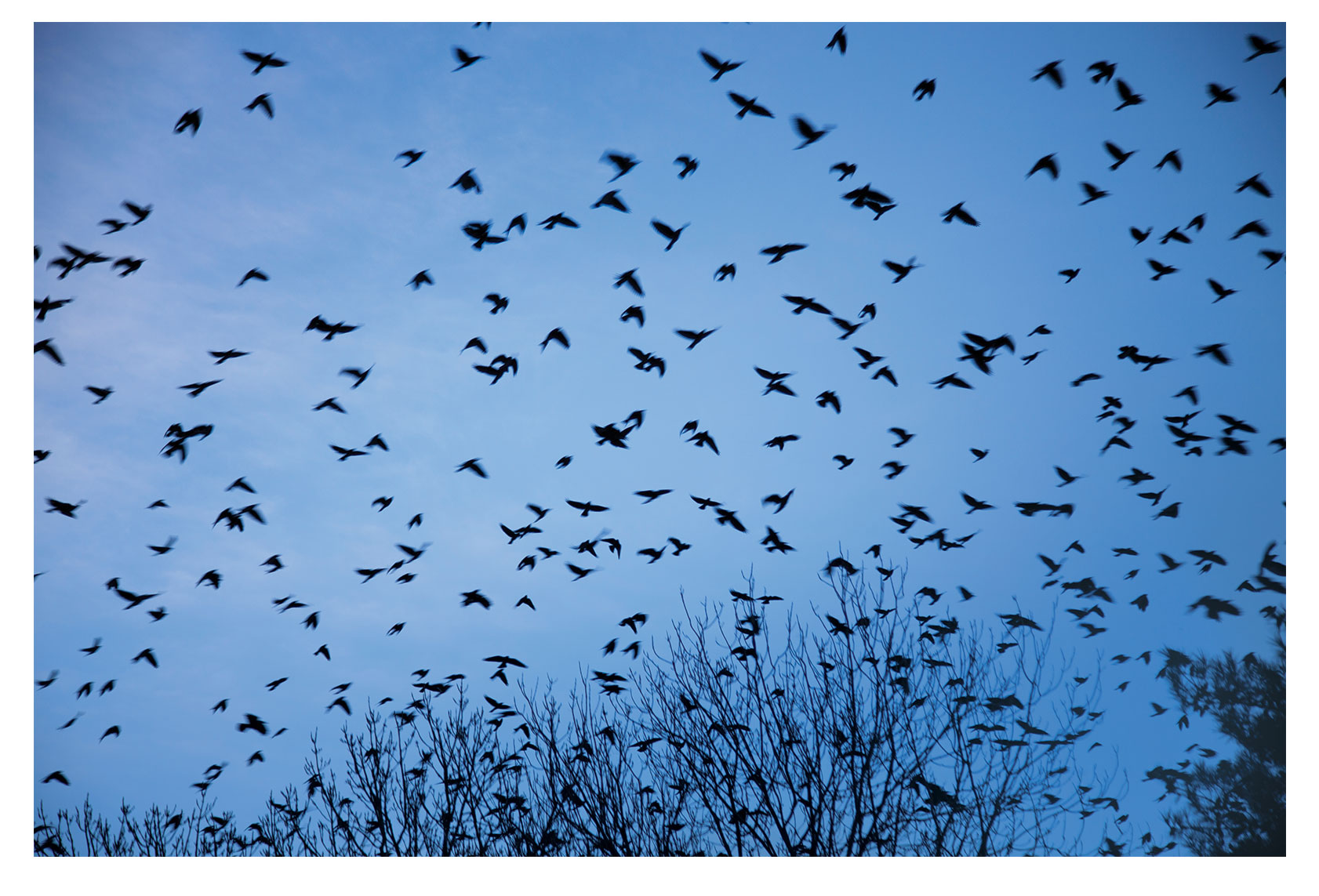
News Bites


Giraffe Sex is Weirder Than You Thought
Professors Lynette and Benjamin Hart recently provided new insight into the unique sex lives of giraffes, their reproductive behavior, and how their anatomy supports that behavior in the journal Animals. The study—published close to Valentine’s Day—garnered attention from media outlets worldwide including Gizmodo, Yahoo News, Science Alert, and La Nación.
Giraffes have no set breeding season. They don’t go into heat, like dogs or cats. They don’t make mating calls or provide visual cues of sexual readiness. So how is a male giraffe to know his advances will be well-received? In short: pee, pheromones and a gentle nudge.
First, the bulls provoke the females to urinate by nudging them and sniffing their genitalia. If the female is open to his invitation, she widens her stance and pees for about five seconds while the male takes the urine in his mouth. He then curls his lip, inhaling with an open mouth—an act called flehmen that transports the female’s scent and pheromones from his oral cavity to the vomeronasal organ.
This study also uncovered other interesting discoveries about giraffe behavior: instances of giraffes seeking and chewing bones, a procession of giraffes arriving to investigate a giraffe corpse, and a bull emitting a loud growl were also observed.

Virus Hunters
CBS’s 60 Minutes sent a team to Uganda to document how virus hunters search for pathogens with pandemic potential. They interviewed wildlife epidemiologist Christine Johnson who leads a UC Davis team that has been hunting viruses around the globe for more than a decade.
The team humanely samples bats, non-human primates and mosquitos to look for zoonotic viruses—those that transfer from animals to humans. With population growth, humans have expanded into areas that narrow the buffer between people and wildlife.
Illness noted in people in the same areas can then be cross referenced to the viruses identified to try to understand transmission of a particular virus. The researchers emphasized that as the threat of spillover events grow, it becomes more evident that human health and the health of the natural world are inextricably tied to one another.

Science Comes to the Rescue
SeaDoc Society (a program within the school’s Karen C. Drayer Wildlife Health Center) was heavily featured in a Sunday Seattle Times cover story about salmon populations and predation of fish by pinnipeds—or seals and sea lions. The issue is heated and often polarized, pitting salmon recovery and human rights of Tribes and First Nations against animal welfare issues related to removal of these pinnipeds to reduce salmon predation.
“While pinniped populations in the Salish Sea region are at their peak and salmon populations have declined to 6 to 7 percent of historical numbers, coincidence doesn’t mean there is a cause and effect,” said SeaDoc’s Director Joe Gaydos, who was part of a task force that recommended pulling all the science together to take an independent look at the issue. “Rectifying the historic causes of salmon declines, including habitat destruction, hatcheries, dams and over-fishing are still at play.”
While state officials are considering lethal control of pinnipeds to help these fish populations recover, a major scientific review suggests that this drastic measure might not even work.
“Do we know enough to make a decision,” Gaydos said, “or are there big questions that still need to be answered before we do anything about pinniped predation on salmon? This is the type of complex societal issue where science adds huge value.”

Bird Flu Continues to Spread
Although avian influenza or bird flu has been around for a century, the world is currently going through its worst-ever outbreak. The highly infectious H5N1 strain is responsible for the death of hundreds of thousands of wild birds and millions of domestic ones. It is also being found in mammals, including dolphins, seals, foxes and otters in the U.K., grizzly bears in the U.S. and mink in Spain. It is believed the infected mammals had fed on dead or sick wild birds which had the virus.
Bird flu is an infectious disease of poultry and wild birds that historically flares up in autumn before fading away in spring and summer. It can spread through entire flocks of domestic birds within a matter of days, through droppings and saliva, or through contaminated feed and water. This virus is well adapted to wild migratory birds. The huge amount of viral load in these wild populations creates a danger for commercial poultry operations, and carries it to places where the disease doesn’t usually arrive like South America, where it is infecting and killing shore birds and pelicans.
UC Davis experts have been quoted in The Atlantic, San Francisco Chronicle, BBC, and other outlets worldwide. While most people feel the impacts of bird flu when they are faced with higher egg prices or empty store shelves, many don’t understand the One Health connection between animals, humans and the environment that contribute to the spread of this disease.
